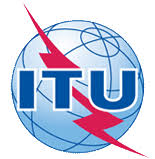SERIES X: DATA NETWORKS, OPEN SYSTEM COMMUNICATIONS AND SECURITY - Secure applications and services (2) – Distributed ledger technology security
Security guidelines for using distributed ledger technology for decentralized identity management

Security guidelines for using distributed ledger technology for decentralized identity management

ISO 8000 is the global standard for Data Quality and Enterprise Master Data. It describes the features and defines the requirements for standard exchange of Master Data among business partners. It establishes the concept of Portability as a requirement for Enterprise Master Data, and the concept that true Enterprise Master Data is unique to each organization. (Source: Wikipedia)

ISO 10303 is an ISO standard for the computer-interpretable representation and exchange of product manufacturing information.

This document identifies technical requirements for information exchange between entities within the reference architecture.
The requirements for information exchange in the following networks are within the scope of this document:
— user network that connects the user entity and the digital twin entity;
— service network that connects sub-entities within the digital twin entity;
— access network that connects the device communication entity to the digital twin entity and to the user entity;
— proximity network that connects the device communication entity to the observable manufacturing elements

This document provides a list of basic information attributes for the OMEs:
— examples of information attributes are given;
— standards that can define these information attributes are discussed in Annex A.

This part of ISO 9735 for batch EDIFACT security defines the security key and certificate management message KEYMAN.

This part of ISO 9735 specifies syntax rules for associated data in EDI to be interchanged between computer application systems. This provides a method to transfer data which cannot be carried by means of either a batch or interactive EDIFACT message. The data may be created by other applications (such as STEP, CAD, etc.), and is referred to in this part as associated data.

This part of ISO 9735 for batch EDIFACT security addresses message/package level, group level and interchange level security for confidentiality in accordance with established security mechanisms.

ISO 13584-25:2004 provides generic EXPRESS resource constructs that support the description of aggregate data types and values occurring in supplier libraries. It also contains an integrated EXPRESS information model for representing supplier libraries for the purpose of exchange. This integrated information model integrates the above resource constructs with other EXPRESS resource constructs from different parts of ISO 13584 and ISO 10303 into one single schema. Supplier libraries may consist of definitions and of representations of families of parts. They may also define new representation categories. Supplier libraries may consist only of dictionary elements with or without aggregate data types, or they may also contain explicit specifications of the sets of permitted instances.
When used together with view exchange protocols, this integrated information model also permits the exchange of one or several representation categories for the parts defined in a parts library.
The following are within the scope of ISO 13584-25:2004:
generic resource constructs for representing aggregate data types. Aggregate data types and values are modelled according to the definition of aggregate data types of the EXPRESS language (ISO 10303-11);
generic resource constructs for representing aggregate values;
generic resource constructs for representing assembled parts that may contain an unlimited number of constituent components;
a library integrated information model that provides for modelling and exchanging supplier libraries that contain properties whose values may be aggregate-structured, and whose possible class extensions are explicitly described as sets of instances.
The following are outside the scope of this part of ISO 13584-25:2004:
representation of expressions and variables;
implicit description of the set of permitted instances of a class by means of constraints;
specification of a software system able to manage supplier libraries represented according to the information models defined in ISO 13584-25:2004.

ISO 13584-24:2003 provides generic EXPRESS resource constructs that support the description of different kinds of information about supplier libraries. It also contains a set of integrated EXPRESS information models for representing supplier libraries for the purpose of exchange. These integrated information models integrate EXPRESS resource constructs from different parts of ISO 13584 and ISO 10303 into a single schema.
Three integrated EXPRESS information models are defined in ISO 13584-24:2003. They permit respectively the exchange of libraries which consist either of definitions of families of parts, representations of families of parts or definitions of new representation categories that may be provided for any family of parts.
These integrated EXPRESS information models contain provisions that permit a supplier library to reference external files. For each integrated EXPRESS information model, ISO 13584-24:2003 specifies which formats are allowed for these external files. Other external file formats are defined in the view exchange protocol series of parts of ISO 13584.

This part of ISO 13584 specifies:
— an EXPRESS schema for generic expressions;
— an EXPRESS schema for expressions, that models the subset of the allowed expressions in the EXPRESS language defined in ISO 10303-11 that corresponds to integer, real, Boolean and string data types. This schema uses the resources defined in the generic expression schema.
The following are within the scope of this part of ISO 13584:
— the exchange of expressions that involve both constants and variables;
— the function that checks whether or not a numeric expression should evaluate to an integer value;
— the constraints which ensure that an expression is semantically correct;
— the computation of the variables or functions used in an expression;
— the function that checks if an expression may be mapped on to the SQL query language. The following are outside the scope of this part of ISO 13584:
— the assignment of values to variables within some context;
— the triggering mechanism that computes the value of an expression in a given context.

This document provides guidance in addition to the conformance in the parts.
